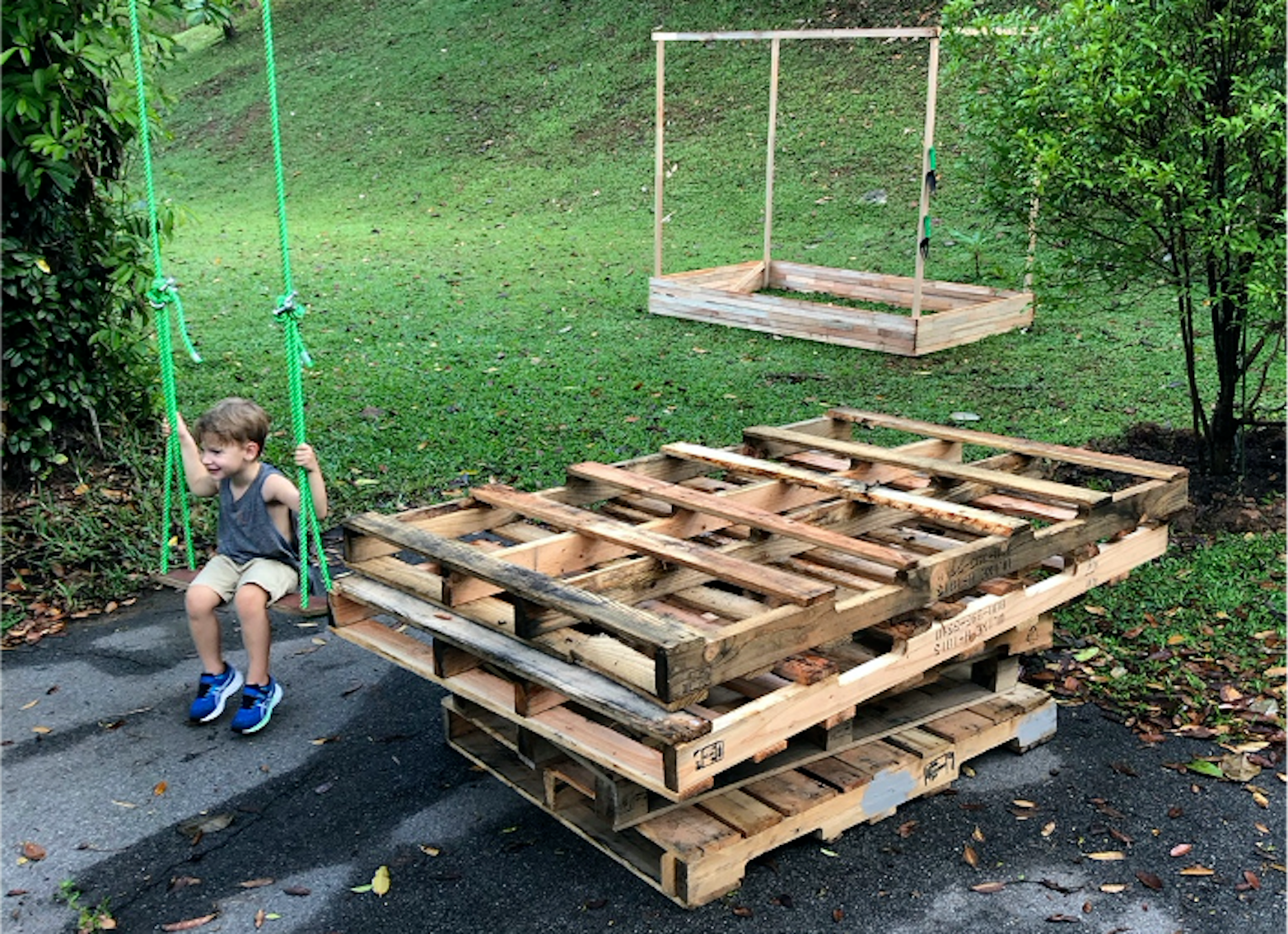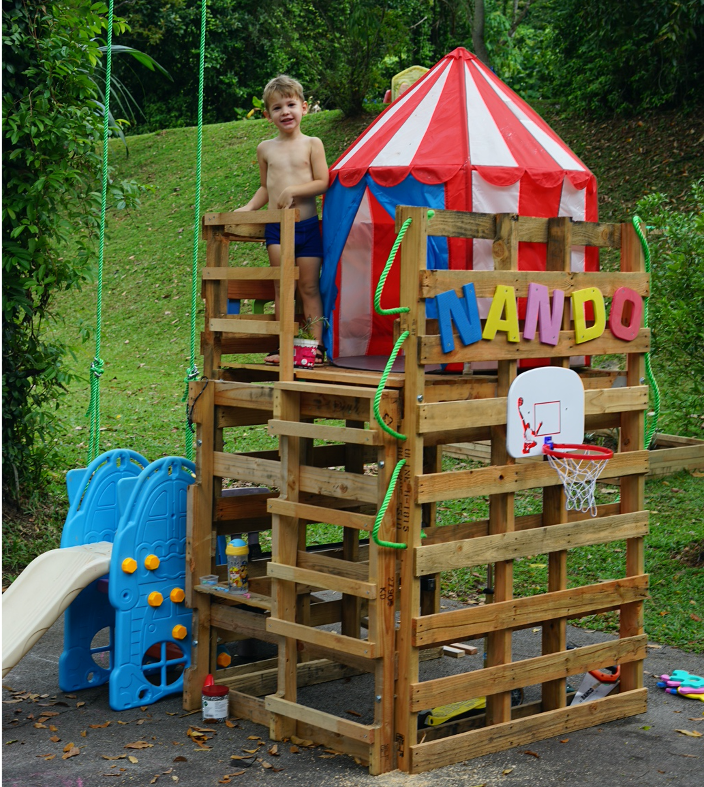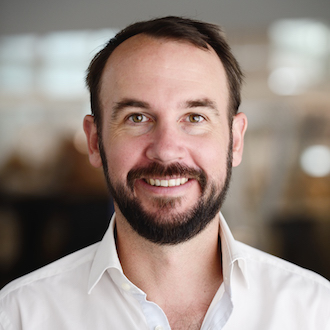If you can’t access the playground, build your own!
With no access to the usual playground and with a 3 year old at home during the Circuit Breaker period, Aurel von Richthofen narrates how he and his family took matters into their own hands (literally) to build their very own playground.

During the height of the Circuit Breaker period, like so many families, Ludovica and I were facing the double challenge of keeping up with remote work and home schooling without going totally crazy. Not just was it difficult to convey the concept of not socialising to our three-year-old son, but we also had to skip visiting all the fun places outdoors that we loved, most of all the local playgrounds!
After catching up on all the long overdue papers, reports, and reviews, we started to feel an emptiness that related not just to the absence of social interaction but also to the lack of a creative environment. Such an environment would facilitate the kind of work that leads to something truly innovative, something disruptive, something exciting, may it be in the form of a project, a new collaboration, a joint publication or a prototype. We realised that the many casual encounters at FCL, SEC and CREATE, the intellectual stimulus arising from talks, presentations and discussions, but also the availability of spaces and tools for imagining and making lead to a burst of creative energy for us. Now that we all met remotely over the screen facing various technical challenges and asynchronocities our creative flow ebbed down.
As a couple of ‘formerly-practicing-architects-now-turned-researchers’ we looked back to our ‘design-roots’ and decided to make a project out of this situation! Five wooden pallets and a few nuts and bolts later we had assembled a playground castle for our son in the garden. This was not just a perfect vent for a lot of creative energy, but also made us re-discover and appreciate the place we stayed at. Now, 4 months later, with slightly relaxed visiting rules in place, the playground is on the map of many friends and neighbours with kids passing by. The playground castle lead to more projects like building a bunkbed for the kids, starting tropical horticulture with banana, papaya and durian, and clearing a mountain bike trail in the jungle. Our learning from the Circuit Breaker is “If you can’t access the playground, build your own!”


Dr Aurel von Richthofen is a Senior Researcher & Co-Investigator of the Cities Knowledge Graph project, where he researches topics related to computational urban design, urban sustainability, and urban design education. He is a registered architect, urban designer, and experienced educator.

Ludovica Tomarchio s a PhD candidate at the Singapore University of Technology (SUTD) and Design and researcher in the Big Data Informed Urban Design and Governance project. Ludovica’s research focuses on the use of social-media and the production of art in urban spaces in Singapore.